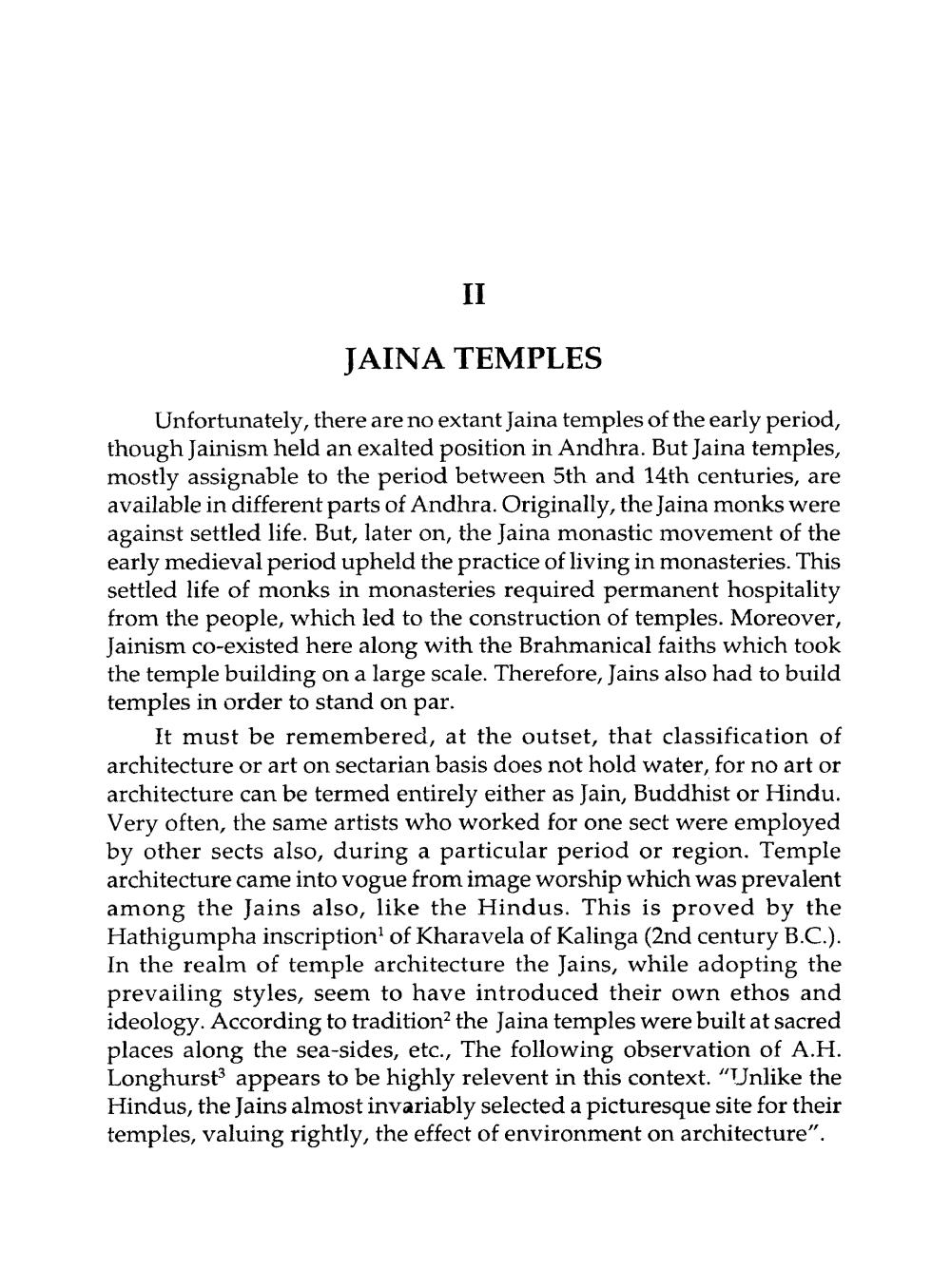________________
JAINA TEMPLES
Unfortunately, there are no extant Jaina temples of the early period, though Jainism held an exalted position in Andhra. But Jaina temples, mostly assignable to the period between 5th and 14th centuries, are available in different parts of Andhra. Originally, the Jaina monks were against settled life. But, later on, the Jaina monastic movement of the early medieval period upheld the practice of living in monasteries. This settled life of monks in monasteries required permanent hospitality from the people, which led to the construction of temples. Moreover, Jainism co-existed here along with the Brahmanical faiths which took the temple building on a large scale. Therefore, Jains also had to build temples in order to stand on par.
It must be remembered, at the outset, that classification of architecture or art on sectarian basis does not hold water, for no art or architecture can be termed entirely either as Jain, Buddhist or Hindu. Very often, the same artists who worked for one sect were employed by other sects also, during a particular period or region. Temple architecture came into vogue from image worship which was prevalent among the Jains also, like the Hindus. This is proved by the Hathigumpha inscription' of Kharavela of Kalinga (2nd century B.C.). In the realm of temple architecture the Jains, while adopting the prevailing styles, seem to have introduced their own ethos and ideology. According to tradition? the Jaina temples were built at sacred places along the sea-sides, etc., The following observation of A.H. Longhurst appears to be highly relevent in this context. "Unlike the Hindus, the Jains almost invariably selected a picturesque site for their temples, valuing rightly, the effect of environment on architecture".




